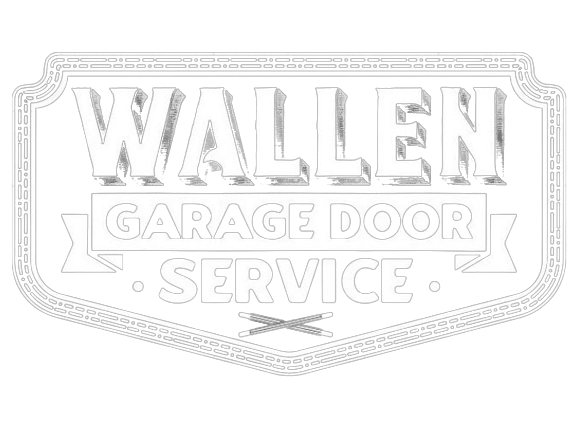When it comes to choosing a garage door opener for your home, one of the most popular options is a linear garage door opener. These openers provide smooth and reliable operation, making them a favorite among homeowners. In this ultimate guide, we will explore everything you need to know about linear garage door openers so that you can make an informed decision when selecting one for your home.
Understanding the Different Types of Linear Garage Door Openers
When it comes to choosing a linear garage door opener, it’s crucial to grasp the various types available. Understanding the differences can aid in making an informed decision tailored to your preferences and needs.
Chain-Driven Openers
Chain-driven garage door openers are a popular and cost-effective option. They operate using a metal chain mechanism to lift and lower the garage door. While these openers are generally more affordable, they tend to produce more noise during operation compared to other types. If noise isn’t a significant concern and budget is a priority, a chain-driven opener might be a suitable choice.
Belt-Driven Openers
On the contrary, belt-driven garage door openers offer a quieter operation compared to their chain-driven counterparts. Instead of a metal chain, they utilize a sturdy belt made of rubber or fiberglass-reinforced materials. This design significantly reduces the noise produced during the opening and closing of the garage door. However, it’s important to note that belt-driven openers typically come with a higher price tag.
Factors to Consider when Choosing a Linear Garage Door Opener
Garage Door Weight and Size
One of the foremost factors to consider when selecting a linear garage door opener is the weight and size of your garage door. Not all openers are designed to handle the same lifting capacities. It’s imperative to choose an opener that can effectively lift and operate your specific door. Failure to match the opener’s capacity with the door’s weight may result in malfunctions or even damage to the opener over time.
Noise Level
Another crucial consideration is the noise level produced by the garage door opener during operation. If your garage is attached to living spaces or bedrooms, or if there are rooms directly above it, opting for a quieter opener is essential to minimize disturbances. Assess the noise levels of different models to find one that aligns with your comfort preferences and the needs of your household.
Assessing your Garage Door Requirements
Determining Door Type
Before selecting a linear garage door opener, it’s crucial to assess the type of door you have. Whether it’s a sectional door, a single-panel door, or a heavy solid wood door, each type demands specific features and lifting capacities. Understanding your door type ensures compatibility and optimal performance.
Frequency of Use
Consider the frequency of door usage when choosing a linear garage door opener. A heavily used garage door may require a more robust and durable opener to withstand frequent operation without compromising performance or longevity. Assessing your usage patterns helps in selecting a suitable opener that meets your needs.
Additional Security Features
For enhanced security, evaluate whether you require additional features such as rolling code technology or smartphone connectivity in your linear garage door opener. Rolling code technology provides advanced encryption, preventing unauthorized access, while smartphone connectivity allows remote monitoring and control for added convenience and peace of mind.
Comparing the Top Linear Garage Door Opener Models
Now that you have a good understanding of your garage door requirements, it’s time to compare the top linear garage door opener models available in the market. Some popular options include the LiftMaster 8500W, the Chamberlain B970, and the Genie SilentMax 1200. Compare their features, lifting capacities, noise levels, and additional functionalities to determine which one suits your needs best.
Features and Technologies to Look for in a Linear Garage Door Opener
Choosing the right linear garage door opener involves considering various features and technologies to ensure optimal functionality and convenience. Here are some essential factors to keep in mind:
Safety Sensors
One of the most crucial features to prioritize in a linear garage door opener is safety sensors. These sensors detect any objects or individuals in the path of the closing door, triggering an immediate reversal to prevent accidents or damage. Prioritize openers equipped with reliable safety sensors for enhanced peace of mind.
Battery Backup
In areas prone to power outages or for added reliability, a linear garage door opener with battery backup is indispensable. This feature ensures that your garage door remains operational even during electrical disruptions, allowing you to access your garage when needed without relying solely on mains power.
Smart Home Integration
Modern linear garage door openers often come with smart home integration capabilities, allowing seamless control and monitoring via smartphone apps or voice commands. Look for openers compatible with popular smart home platforms like Alexa or Google Assistant, enabling convenient operation from anywhere, anytime.

Installation and Setup Process for Linear Garage Door Openers
Step 1: Preparation
Before beginning the installation process, gather all necessary tools and equipment as specified by the manufacturer. Ensure you have a stable ladder or platform for safe access to the ceiling where the opener will be mounted.
Step 2: Mounting the Opener
- Locate the ideal position on the ceiling for mounting the linear garage door opener. Ensure it is centered and aligned with the garage door.
- Use appropriate hardware (typically included with the opener) to securely mount the opener to the ceiling joists or support beams. Follow the specific instructions provided by the manufacturer to ensure proper installation.
Step 3: Connecting to the Door
- Attach the rail or track of the opener to the garage door according to the manufacturer’s guidelines. This may involve bolting or screwing the rail to the door itself.
- Ensure the opener is properly aligned with the door and adjust as necessary to achieve smooth operation.
Step 4: Programming Remote Control or Keypad
- Refer to the instruction manual to program the remote control or keypad that comes with the linear garage door opener.
- This usually involves setting the opener’s frequency and pairing it with the remote control or keypad. Follow the specific steps outlined in the manual for your model.
Step 5: Testing and Troubleshooting
- Once the installation is complete, test the functionality of the garage door opener by opening and closing the door several times.
- Check for smooth operation and listen for any unusual noises or malfunctions.
- If you encounter any difficulties during the installation or setup process, refer to the user manual for troubleshooting tips or contact customer support for assistance.
Troubleshooting Common Issues with Linear Garage Door Openers
Linear garage door openers offer convenient access to your garage space, but like any mechanical device, they can encounter issues from time to time. Understanding common problems and their solutions can help you troubleshoot effectively and keep your garage door opener running smoothly.
Garage Door Doesn’t Open or Close Properly
One of the most common issues with a linear garage door opener is when the garage door fails to open or close as expected. In such cases, the first step is to inspect the alignment of the safety sensors. These sensors are typically located near the bottom of the garage door tracks on either side. Ensure that they are properly aligned and free from any obstructions such as dirt, debris, or spider webs. Cleaning the sensors with a soft, dry cloth can often resolve the issue.
Unusual Noises from the Opener
If you notice unusual noises coming from your linear garage door opener during operation, it could indicate underlying issues. Begin by inspecting the moving parts of the opener, including the chain, belt, and rollers, for any signs of wear or damage. Tighten any loose hardware and lubricate the moving parts as recommended by the manufacturer. If the noise persists, it may be necessary to further investigate the issue or seek professional assistance.
Consult the User Manual or Customer Support
For more complex issues with your linear garage door opener, consulting the troubleshooting section of the user manual can provide valuable guidance. The user manual typically contains detailed instructions for troubleshooting common problems and may offer solutions specific to your model of garage door opener. Additionally, if you’re unable to resolve the issue on your own, don’t hesitate to contact customer support for assistance. They can provide further troubleshooting steps or arrange for repair services if needed.
Maintenance and Care Tips for Linear Garage Door Openers
Regular Inspection and Lubrication
To maintain the longevity and efficient operation of your linear garage door opener, it’s crucial to conduct regular inspections. Check the various components such as the motor, rails, and chains or belts for any signs of wear or damage. If you notice any issues, address them promptly. Additionally, lubricate the moving parts as per the manufacturer’s recommendations to minimize friction and ensure smooth operation.
Keep Tracks Clean and Debris-Free
Cleanliness is key to the proper functioning of your garage door opener’s tracks. Regularly inspect the tracks for dirt, debris, or obstructions that could impede the door’s movement. Clean the tracks thoroughly and remove any buildup to prevent interference with the door’s operation.
Test Safety Sensors Regularly
Safety should always be a top priority when it comes to garage door openers. Ensure that the safety sensors are functioning correctly by testing them regularly. Simply place an object in the path of the door while closing it – the door should automatically reverse its direction if the sensors are working properly. If the sensors fail to respond, troubleshoot the issue immediately to prevent accidents or injuries.
Professional Tune-Up and Inspection
While DIY maintenance is essential, it’s also wise to enlist the help of a professional for a comprehensive tune-up and inspection at least once a year. A qualified technician can identify any potential issues or worn-out components that may need attention. This proactive approach can help prevent minor problems from escalating into costly repairs down the line.
Conclusion: Finding the perfect linear garage door opener for your home
Choosing the best linear garage door opener for your home requires careful consideration of your specific requirements and preferences. By understanding the different types of openers, assessing your garage door’s needs, and comparing the top models, you can make an informed decision.
Remember to look for features and technologies that enhance safety and convenience, and ensure proper installation and maintenance for optimal performance. With the right linear garage door opener, you can enjoy the convenience and security of a smoothly operating garage door.
If you have any questions or need assistance in choosing the right linear garage door opener for your home, don’t hesitate to contact Wallen Garage Door. Our team of experts is ready to provide guidance and help you find the perfect solution for your garage door needs.
Frequently Asked Questions
Q: Are linear garage door openers more expensive than other types?
A: The cost of a linear garage door opener can vary depending on the model and features. While they may have a slightly higher price tag compared to other types, their durability and reliability make them a worthwhile investment.
Q: Can I install a linear garage door opener myself?
A: While it is possible to install a linear garage door opener yourself, it is recommended to hire a professional for proper installation and to ensure safety. Professional installation also often comes with warranties and guarantees.
Q: How long do linear garage door openers typically last?
A: With proper maintenance and care, linear garage door openers can last 10 to 15 years or more. Regular inspections and tune-ups can help identify any potential issues and extend the lifespan of your opener.
Q: Can I use my smartphone to control a linear garage door opener?
A: Many modern linear garage door openers offer smartphone connectivity, allowing you to control your garage door remotely. This feature provides convenience and peace of mind, as you can monitor and operate your garage door from anywhere.
Q: What safety features should I look for in a linear garage door opener?
A: Safety features to consider include safety sensors that detect obstacles and reverse the door’s movement, as well as rolling code technology that generates a new code each time the door is operated, preventing unauthorized access.
Q: How often should I lubricate my linear garage door opener?
A: It is recommended to lubricate the moving parts of your linear garage door opener, such as the motor, chains, or belts, at least once a year. Use a silicone-based lubricant for optimal performance.
Q: What should I do if my linear garage door opener stops working?
A: If your linear garage door opener stops working, start by checking the power source and ensuring that the motor is still operational. If the issue persists, consult the troubleshooting section of your opener’s user manual or contact customer support for assistance.







